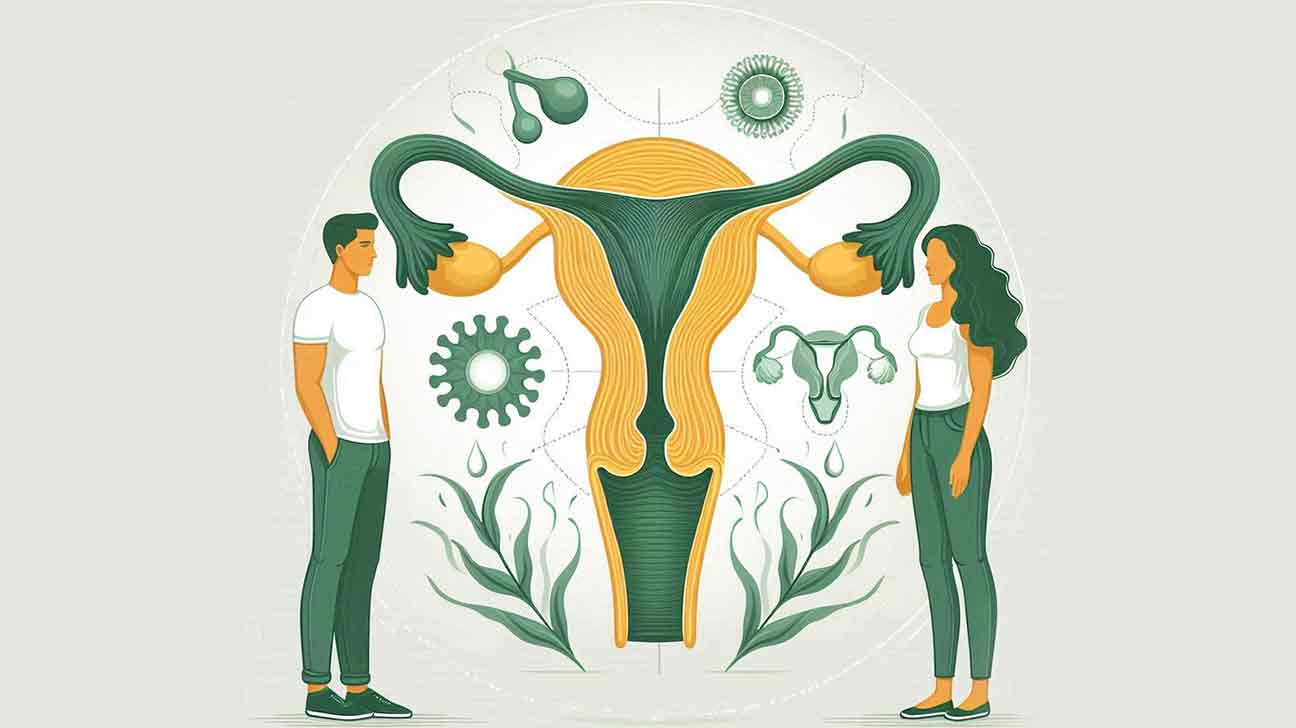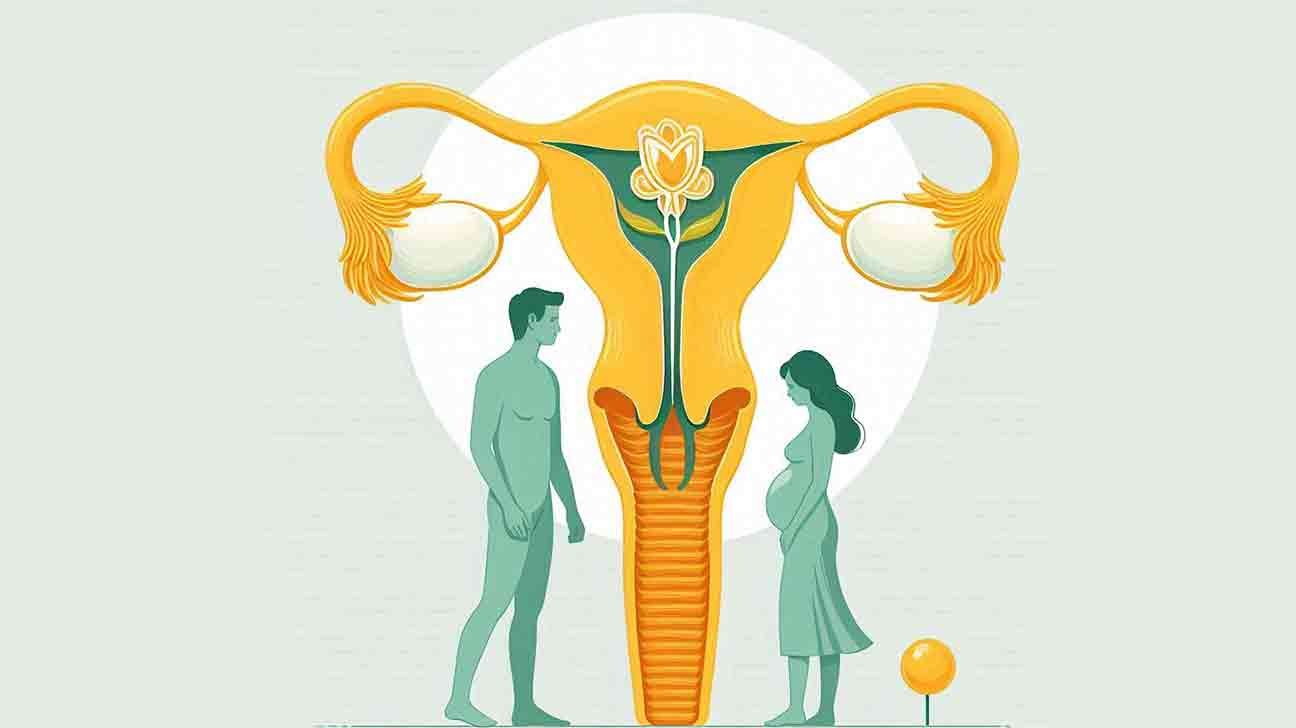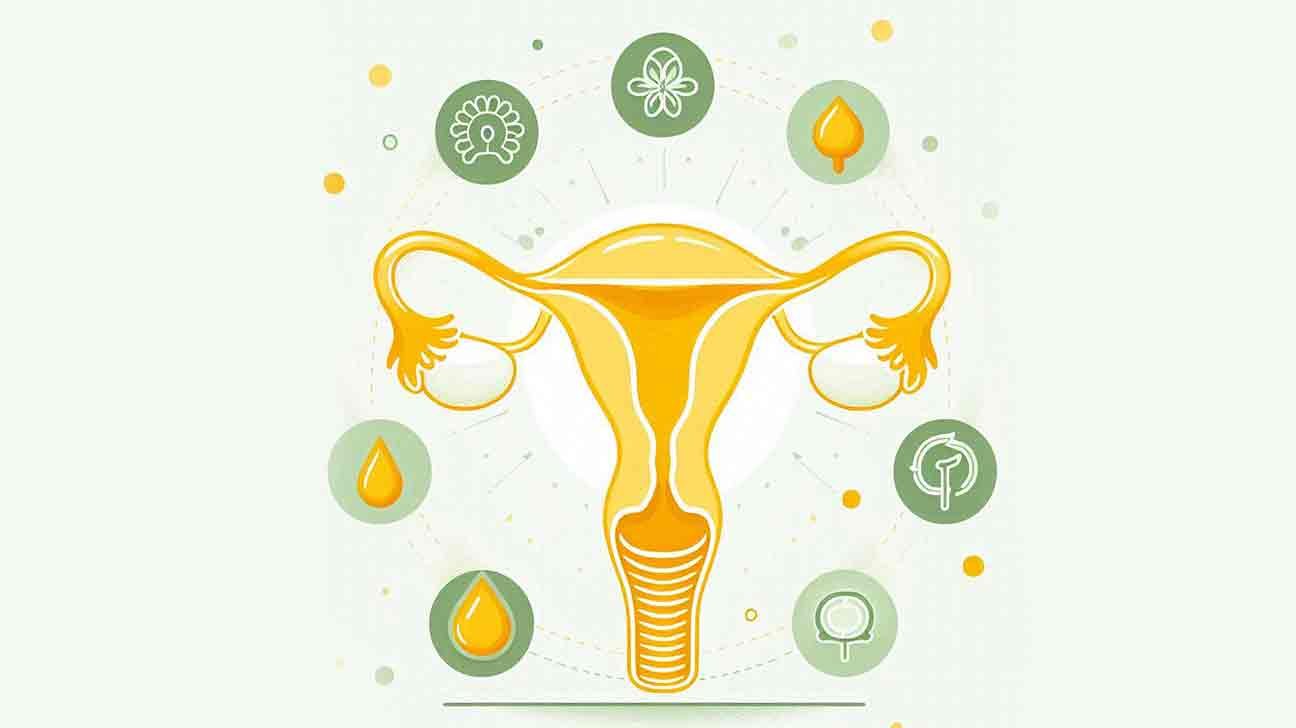Involution of the uterus is a vital physiological process that occurs after childbirth, enabling the uterus to return to its pre-pregnancy size, structure, and position. This natural healing mechanism is essential for the mother’s postpartum recovery, ensuring the restoration of normal uterine function and overall health.
What is Uterine Involution?
Uterine involution refers to the series of changes the uterus undergoes to revert to its non-pregnant state following delivery. This process involves the reduction in size and weight of the uterus, cessation of bleeding, and re-establishment of its normal anatomical position within the pelvic cavity.
Stages and Timeline of Uterine Involution
Understanding the timeline and stages of uterine involution helps in monitoring postpartum recovery and identifying any complications early.
- Immediate Postpartum Period (First Few Days):
- Size Reduction: Immediately after delivery, the uterus weighs approximately 1000 grams, roughly the size of a term fetus. It begins to contract and decrease in size.
- Fundal Firmness: The uterine fundus (top portion) is firm and palpable just above the pubic symphysis. Regular contractions, often felt as afterpains, help in reducing uterine size.
- Lochia: Vaginal discharge, known as lochia, starts, consisting of blood, mucus, and uterine tissue.
- First Week Postpartum:
- Continued Contraction: The uterus continues to shrink, typically reaching the size of a grapefruit by the end of the first week.
- Lochia Progression: Lochia transitions from lochia rubra (red) to lochia serosa (pink or brown), indicating the healing process.
- Weeks 2 to 6 Postpartum:
- Significant Reduction: By the second week, the uterus is approximately the size of a pear and continues to decrease in size.
- Return to Non-Pregnant Position: The uterus repositions itself within the pelvic cavity.
- Cessation of Lochia: Lochia gradually diminishes and typically stops by the sixth week.
Physiological Mechanisms Driving Uterine Involution
Several physiological factors facilitate the involution of the uterus:
- Smooth Muscle Contractions: The myometrium (muscular layer of the uterus) contracts rhythmically, aided by the hormone oxytocin, which is released during and after childbirth.
- Hormonal Changes: A significant drop in estrogen and progesterone levels postpartum supports the involution process.
- Reduction in Blood Flow: As the uterus decreases in size, blood flow to the organ diminishes, aiding in size reduction.
Factors Affecting Uterine Involution
Several factors can influence the rate and effectiveness of uterine involution:
- Breastfeeding: Promotes oxytocin release, enhancing uterine contractions and facilitating involution.
- Age: Younger mothers may experience quicker involution compared to older mothers.
- Multiple Pregnancies: Women with multiple pregnancies in a short span may have slower involution due to stretched uterine tissues.
- Uterine Overdistension: Large babies, multiple gestations, or polyhydramnios can delay involution.
- Postpartum Hemorrhage: Excessive bleeding can interfere with the involution process.
- Infections: Conditions like endometritis can impede proper involution.
Clinical Significance and Potential Complications
Proper uterine involution is crucial for maternal health postpartum. Complications arising from impaired involution include:
- Subinvolution of the Uterus (ICD-10 Code: O72.1)
- Definition: Slowed or incomplete return of the uterus to its pre-pregnancy size.
- Symptoms: Prolonged or excessive bleeding, enlarged uterus beyond the expected timeline.
- Causes: Infection, retained placental fragments, fibroids, or hormonal imbalances.
- Management: Treatment of underlying causes, such as antibiotics for infections or surgical removal of retained tissue.
- Postpartum Hemorrhage (ICD-10 Code: O72.0)
- Definition: Excessive bleeding after childbirth.
- Causes: Uterine atony (failure of the uterus to contract), lacerations, or placental issues.
- Management: Medications to stimulate uterine contractions, surgical interventions if necessary.
- Endometritis (ICD-10 Code: O73)
- Definition: Inflammation or infection of the uterine lining.
- Symptoms: Fever, uterine tenderness, foul-smelling lochia.
- Management: Antibiotic therapy and supportive care.
Nursing and Medical Management
Effective management of uterine involution involves both preventive measures and prompt treatment of complications:
- Monitoring:
- Regular assessment of the uterine size, position, and firmness.
- Observation of lochia for color, consistency, and volume.
- Vital signs monitoring to detect signs of hemorrhage or infection.
- Encouraging Breastfeeding:
- Supports involution through oxytocin-mediated uterine contractions.
- Promotes bonding and provides nutritional benefits to the newborn.
- Pain Management:
- Administration of analgesics to alleviate discomfort from uterine contractions.
- Preventing Infection:
- Maintaining aseptic techniques during delivery.
- Administering prophylactic antibiotics when indicated, such as after cesarean sections or in cases of prolonged labor.
- Addressing Complications:
- Early detection and management of subinvolution, hemorrhage, or infections.
- Surgical interventions when conservative treatments fail.
ICD-10 Coding Related to Uterine Involution
While normal uterine involution does not have a specific ICD-10 code, related conditions that involve impaired involution do. Accurate coding is essential for medical documentation, billing, and treatment planning.
- O72.0: Postpartum hemorrhage due to uterine atony.
- O72.1: Subinvolution of uterus following delivery.
- O73: Other puerperal infections of genital tract, including endometritis.
Example Coding Scenario:
- A patient presenting with excessive postpartum bleeding due to uterine atony would be coded as O72.0.
irritable uterus
An irritable uterus is a condition characterized by abnormal uterine contractions that can cause discomfort, pain, or complications during pregnancy and labor. Understanding the causes, symptoms, diagnosis, and management of an irritable uterus is essential for expectant mothers and healthcare providers to ensure a healthy pregnancy and delivery.
What is an Irritable Uterus?
An irritable uterus refers to a uterus that exhibits excessive or irregular contractions outside of the normal labor process. These contractions can occur during pregnancy or labor and may lead to discomfort, pain, or preterm labor if not properly managed. While uterine contractions are a natural part of pregnancy and childbirth, an irritable uterus implies a heightened sensitivity or hyperexcitability of the uterine muscles.
Causes of an Irritable Uterus
Several factors can contribute to an irritable uterus, including:
- Hormonal Imbalances:
- Oxytocin: Elevated levels can increase uterine contractions.
- Progesterone Deficiency: Progesterone helps relax the uterine muscles; low levels can lead to increased irritability.
- Infections:
- Urinary Tract Infections (UTIs): Can irritate the uterus and trigger contractions.
- Pelvic Inflammatory Disease (PID): Inflammation can affect uterine responsiveness.
- Stress and Emotional Factors:
- High stress levels can influence hormone levels, leading to uterine irritability.
- Physical Factors:
- Placental Abruption: Separation of the placenta can cause uterine irritation.
- Polyhydramnios: Excess amniotic fluid increases uterine stretch and excitability.
- Lifestyle Factors:
- Caffeine Consumption: Excessive intake may stimulate uterine contractions.
- Smoking and Substance Use: Can affect uterine muscle function.
- Medical Conditions:
- Thyroid Disorders: Hyperthyroidism or hypothyroidism can influence uterine activity.
- Diabetes: Poorly controlled diabetes may contribute to uterine irritability.
Symptoms of an Irritable Uterus
The primary symptom of an irritable uterus is abnormal uterine contractions. Other associated symptoms may include:
- Frequent or Persistent Contractions: Contractions that occur more often than normal.
- Pain or Discomfort: Cramping sensations in the lower abdomen or back.
- Reduced Fetal Movement: May indicate stress on the fetus.
- Vaginal Bleeding or Discharge: Can be a sign of complications.
- Signs of Preterm Labor: Such as pelvic pressure or lower back pain.
Diagnosis of an Irritable Uterus
Diagnosing an irritable uterus involves a combination of clinical evaluation and diagnostic tests:
- Medical History and Physical Examination:
- Assessing symptoms, pregnancy history, and potential risk factors.
- Uterine Contraction Monitoring:
- Tocodynamometry (Toco): Measures the frequency and intensity of contractions.
- Intrauterine Pressure Catheter (IUPC): Provides detailed information on uterine contractions.
- Ultrasound Examination:
- Evaluates fetal position, amniotic fluid levels, and placental status.
- Laboratory Tests:
- Infection Screening: To identify and treat underlying infections.
- Hormone Level Assessment: To detect hormonal imbalances.
- Fetal Monitoring:
- Non-Stress Test (NST): Monitors fetal heart rate in response to uterine contractions.
- Biophysical Profile (BPP): Assesses fetal well-being through ultrasound and NST.
Treatment and Management of an Irritable Uterus
Managing an irritable uterus focuses on alleviating symptoms, addressing underlying causes, and preventing complications such as preterm labor. Treatment strategies may include:
- Medical Interventions:
- Tocolytics: Medications like nifedipine or terbutaline to relax uterine muscles and reduce contractions.
- Progesterone Supplements: To help relax the uterus and prevent preterm labor.
- Antibiotics: If an infection is identified as the underlying cause.
- Lifestyle Modifications:
- Stress Management: Techniques such as meditation, yoga, or counseling.
- Dietary Changes: Reducing caffeine and avoiding foods that may trigger contractions.
- Adequate Hydration: Ensuring proper fluid intake to maintain uterine relaxation.
- Physical Therapies:
- Rest and Reduced Activity: Limiting physical exertion to decrease uterine activity.
- Warm Baths or Heating Pads: To alleviate pain and relax muscles.
- Alternative Therapies:
- Acupuncture: May help reduce stress and manage symptoms.
- Herbal Remedies: Certain herbs may support uterine relaxation, but should be used under medical supervision.
- Monitoring and Regular Check-Ups:
- Frequent prenatal visits to monitor uterine activity and fetal well-being.
- Continuous fetal monitoring if preterm labor is suspected.
Potential Complications of an Irritable Uterus
If left unmanaged, an irritable uterus can lead to several complications:
- Preterm Labor and Birth:
- Early onset of labor can result in preterm delivery, posing risks to the newborn.
- Placental Abruption:
- Separation of the placenta from the uterine wall can lead to significant bleeding and fetal distress.
- Low Birth Weight:
- Preterm infants may have lower birth weights and associated health challenges.
- Fetal Distress:
- Compromised oxygen and nutrient supply can affect fetal health and development.
- Uterine Rupture:
- Rare but serious complication involving a tear in the uterine wall, requiring immediate medical intervention.
ICD-10 Coding Related to an Irritable Uterus
Accurate medical coding is essential for documentation, billing, and treatment planning. The ICD-10 codes relevant to an irritable uterus include:
- O56.1: Preterm labor (spontaneous preterm labor with or without delivery)
- O72.0: Postpartum hemorrhage due to uterine atony
- O72.1: Subinvolution of the uterus following delivery
- O73: Other puerperal infections of genital tract (if infection-related)
- O26.8: Other specified complications of pregnancy, childbirth, and the puerperium (used when specific codes do not apply)
Example Coding Scenario:
- A pregnant patient experiencing frequent uterine contractions indicative of preterm labor would be coded as O56.1.
Nursing and Medical Management
Effective management of an irritable uterus involves a multidisciplinary approach:
- Healthcare Provider Responsibilities:
- Assessment: Regular monitoring of uterine contractions, fetal heart rate, and maternal vital signs.
- Medication Administration: Prescribing and managing tocolytics or other relevant medications.
- Patient Education: Informing expectant mothers about signs of preterm labor and when to seek medical help.
- Nursing Interventions:
- Monitoring: Continuous observation of contraction patterns and fetal well-being.
- Supportive Care: Providing comfort measures such as positioning, hydration, and pain relief.
- Emotional Support: Assisting patients in managing anxiety and stress related to uterine irritability.
- Collaborative Care:
- Obstetricians and Maternal-Fetal Medicine Specialists: For high-risk pregnancies and advanced interventions.
- Physical Therapists: Offering techniques to reduce uterine tension and improve relaxation.
- Mental Health Professionals: Supporting emotional well-being and stress management.
Prevention Strategies
While not all cases of an irritable uterus can be prevented, certain measures can reduce the risk:
- Early and Regular Prenatal Care:
- Ensures timely identification and management of risk factors.
- Managing Chronic Conditions:
- Effective control of diabetes, thyroid disorders, and other underlying health issues.
- Infection Prevention:
- Maintaining good hygiene, promptly treating UTIs and other infections.
- Healthy Lifestyle Choices:
- Balanced diet, regular moderate exercise, and avoidance of smoking and excessive caffeine.
- Stress Reduction:
- Incorporating relaxation techniques and seeking support during pregnancy.
Conclusion
An irritable uterus is a significant condition that requires careful monitoring and management to ensure the health and safety of both the mother and the baby. By understanding its causes, symptoms, and treatment options, expectant mothers and healthcare providers can work together to mitigate risks and promote a healthy pregnancy and delivery. If you suspect an irritable uterus or are experiencing unusual uterine contractions, it is crucial to consult with a healthcare professional promptly for appropriate evaluation and intervention.

An anteverted uterus is a naturally occurring uterine position where the uterus tilts forward toward the bladder. This orientation is considered normal and common among women.
Understanding the structure of the female reproductive system includes knowing about the positioning of the uterus. The anteverted uterus, leaning forward, contrasts with a retroverted uterus that tilts backward. Most women have an anteverted uterus and this position typically doesn’t affect fertility or health.
It’s part of the natural variation in female anatomy, requiring no treatment unless associated with symptoms like pain or discomfort. Although commonly asymptomatic, awareness of uterine positioning is beneficial during pregnancy and certain medical procedures. Knowing about an anteverted uterus can alleviate concerns about abnormality, as it is usually a normal finding during gynecological examinations.
Anteverted Uterus
Causes And Risk Factors of Anteverted Uterus
An anteverted uterus is common among women. It is when the uterus tilts forward. Many factors can influence this tilt. Let’s delve into the common causes and risks.
Pelvic Inflammatory Disease (pid)
Pelvic inflammatory disease may cause an anteverted uterus. Bacteria from sexually transmitted infections can lead to PID. This can make the uterus tilt forward.
Endometriosis
Endometriosis can also tilt the uterus. It happens when tissue grows outside the womb. The abnormal tissue growth may force the uterus into an anteverted position.
- Severe pain during periods
- Dyspareunia
- Infertility issues
Uterine Fibroids
Noncancerous growths called uterine fibroids can change the uterus shape. Their size and location may cause an anteverted position.
| Risk Group | Frequency |
|---|---|
| Women in their 30s and 40s | More common |
| Women with family history of fibroids | Higher risk |
Pregnancy
Pregnancy often causes a natural forward tilt. Hormones and a growing baby can shift the uterus. It usually returns to position after childbirth.
Symptoms And Complications of
An anteverted uterus refers to the tilt of the uterus. This tilt is towards the bladder. For some women, it causes no symptoms. Yet, others might face certain discomforts. Knowing these can help in managing and treating the issues early on.
Painful Intercourse
Painful sexual experiences are a significant symptom. The tilt in the uterus can cause pressure or pain during intercourse. This is particularly true for certain positions. Women might feel discomfort or sharp pain.
Lower Back Pain
Chronic lower back pain may signal an anteverted uterus. Some women experience ongoing discomfort. This pain is generally around the lower back area. Regular activities or certain movements can make this pain worse.
Urinary Frequency
Increased need to urinate can be another clue. The uterus’ position places pressure on the bladder. This causes a feeling of fullness or an urgent need to pee. It can happen even when the bladder is not full.
Difficulty Inserting Tampons
Women with this type of uterus may struggle with tampons. Inserting tampons can be difficult or uncomfortable. This is because of the angle of the vaginal canal. It may not align with standard tampon designs.
| Symptom | Description |
|---|---|
| Painful Intercourse | Discomfort during sexual activity due to uterine pressure. |
| Lower Back Pain | Ongoing lower back discomfort aggravated by movement. |
| Urinary Frequency | Frequent urge to urinate caused by pressure on the bladder. |
| Difficulty with Tampons | Challenges inserting tampons due to vaginal canal angle. |
- Regular check-ups help in monitoring symptoms.
- Physical therapy might relieve back pain.
- Specialized tampons or cups can assist with menstrual management.
Diagnosis
An anteverted uterus is a common condition where the uterus tilts forward. For those feeling uncertain about their symptoms, diagnosis is simple and reassuring.
Detecting an anteverted uterus involves a few straightforward procedures. Your doctor will guide you through them. These tests confirm the uterus orientation and rule out complications.
Pelvic Exam
Pelvic Exam
A pelvic exam is the first step. During this test, the doctor feels for the uterus position. The exam is quick with minimal discomfort.
Ultrasound
Ultrasound
The ultrasound offers a clear image of the uterus. It uses sound waves to confirm the anteverted position. The process is safe and painless.
MRI
Mri
In rare cases, an MRI might be recommended. It provides detailed images and helps rule out other conditions. The MRI is a non-invasive test.
Treatment Options
An anteverted uterus is a common condition where the uterus tilts forward. Many women live comfortably without even knowing they have it. For some, it can cause symptoms like discomfort or urinary issues. The treatment plan depends on these symptoms. Understanding your options can offer relief and improve your quality of life. Let’s explore the available treatments.
No Treatment Necessary
Most women with an anteverted uterus do not need treatment. This position of the uterus is normal and typically doesn’t affect health or fertility. Regular check-ups can ensure everything stays normal.
Medication
In cases where symptoms arise, medication can help. Anti-inflammatory drugs and pain relievers may ease discomfort. Doctors can recommend the best options.
Physical Therapy
- Pelvic floor therapy helps strengthen the muscles around the uterus.
- It can relieve pain and improve bladder control.
- Individual plans cater to your body’s needs.
Surgery
Surgery is rare for an anteverted uterus. It might be an option if severe symptoms persist and other treatments fail. Surgical interventions, such as a uterine suspension, can adjust the uterus’s position. Consult with a specialist to understand the risks and benefits.
Remember to discuss these options with your doctor. Each case is different. Professionals can guide you to the best treatment for your unique situation.
Anteverted Uterus And Fertility
The anteverted uterus is a common variation of uterine position where the uterus tilts forward. Many women have this orientation without knowing it, as it usually doesn’t cause symptoms. When considering fertility, myths often swirl around the notion that the position of the womb can significantly impact one’s ability to conceive. Let’s explore the reality behind an anteverted uterus and its influence on fertility and pregnancy.
Effect On Conception
Is conception harder with an anteverted uterus? Rest assured, the uterine position generally has no effect on a woman’s fertility. Scientific evidence suggests that an anteverted orientation is perfectly normal and is not a barrier to getting pregnant. Most women with this uterine position can conceive without difficulty.
Potential Challenges During Pregnancy
While the position doesn’t hinder conception, rare circumstances during pregnancy may arise. An anteverted uterus seldom complicates pregnancy. Occasionally, it may be associated with urinary frequency in the first trimester. As pregnancy progresses, the growing uterus typically shifts and adaptations occur. Thus, potential early discomfort is often short-lived.
- Increased urination in early stages
- Pressure symptoms improve as pregnancy advances
Management And Self-care
Management and Self-Care for an anteverted uterus involves simple yet effective strategies. Women can maintain comfort and health with these methods. Various techniques help ease any discomfort that might be linked to this common uterine position. Let’s explore ways to manage and provide self-care through pelvic exercises, heat therapy, and lifestyle modifications.
Pelvic Exercises
Strengthening the pelvic floor is crucial. Strong muscles lead to better uterus support. Here are some beneficial pelvic exercises:
- Kegel exercises: Tighten and hold pelvic floor muscles, then release.
- Bridges: Lie on your back, feet flat, lift your hips, and hold.
- Squats: Stand with feet apart, bend knees, and lower your body.
Practicing these regularly can make a noticeable difference in pelvic strength.
Heat Therapy
Heat therapy is a comforting solution, particularly if you experience pain. It includes:
- Using a heating pad on the lower abdomen.
- Taking a warm, soothing bath.
Warmth helps relax muscles and reduce discomfort. Use heat for short periods for best results.
Lifestyle Modifications
Making small changes in daily life aids in managing an anteverted uterus. Consider these tips:
| Area | Modification |
|---|---|
| Diet | Eat fiber-rich foods to avoid constipation and straining. |
| Exercise | Include low-impact activities like walking or swimming. |
| Posture | Maintain a proper posture to reduce pressure on the pelvis. |
Adjusting these aspects can enhance comfort and support overall health.
When To See A Doctor
An anteverted uterus is a common position in which the uterus tilts slightly forward. Most women with this uterus position experience no symptoms. Still, certain signs require a doctor’s attention. It is important to note any unusual changes. Identifying potential concerns early can lead to better outcomes.
Persistent Pelvic Pain
Occasional pelvic discomfort is normal. Consistent pain is not. You should see a doctor if you experience:
- Sharp, recurring pain in the pelvic area.
- Discomfort that interferes with daily activities.
- Pain that does not improve with over-the-counter medications.
Such symptoms might indicate issues beyond a tilted uterus.
Changes In Menstrual Cycle
Menstrual patterns can vary. However, it is crucial to seek medical advice if you notice:
- Heavier than usual bleeding during periods.
- Menstrual cycles that are shorter or longer than normal.
- Unexpected spotting between periods.
Sudden changes might suggest an underlying condition.
Difficulty Getting Pregnant
While an anteverted uterus rarely causes fertility issues, you might want to consult a doctor if:
- You have tried to conceive for over a year.
- You are over 35 and have tried for six months.
- You have irregular periods or no periods.
A specialist can assess possible reproductive challenges.
Seeking medical advice for these concerns is vital. Early detection of any complications can ensure appropriate healthcare measures are in place. Remember, timely medical consultations uphold your well-being.
Frequently Asked Questions Of Anteverted Uterus
What Are The Side Effects Of An Anteverted Uterus?
An anteverted uterus typically causes no side effects and is a normal anatomical variation. It generally does not impact health or fertility.
Which Uterus Position Is Normal?
The normal position of the uterus is anteverted, meaning tilted slightly forward. This alignment is typical for most women.
What Is The Anteversion Of The Uterus?
Anteversion of the uterus refers to its normal forward tilt, where it angles over the bladder. This positioning is common in most women.
What Is Anteverted Versus Retroverted?
Anteverted refers to a forward tilt of the uterus, common in most women. Retroverted describes a uterus that tilts backwards toward the spine. Both conditions are typically normal anatomical variations.
Conclusion
Understanding an anteverted uterus is crucial for personal health awareness. This common condition rarely causes concern and is often symptom-free. For those experiencing issues, medical consultation can provide guidance. Embracing our bodily variations is important; knowledge empowers us to do just that.
Remember, every woman’s body is unique and remarkable in its way.






